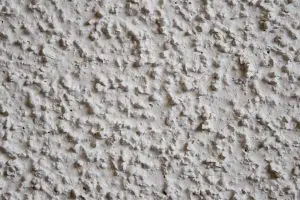Asbestos is one of the oldest materials used in industrial applications. Asbestos in Plaster is merely one of the recent methods of using it. Asbestos fibers have high strength while being 100-200 times thinner when compared with a strand of human hair. Its application is due to its most significant property of all – heat insulation. Use of asbestos has become quite limited these days in the 1st world countries. Though for its high end insulation properties, asbestos in plaster has often been used in various development projects.

Types of Asbestos in Plaster
In a general sense, there are two types of Asbestos in Plaster namely, loosely bound fibers and firmly bound fibers. Loosely bound fibers contain strands of asbestos loosely bound. These do not provide greater structural integrity or strength and are used to insulate stoves and heaters. Ever since asbestos has been banned, glass fibers are slowly taking their place. Firmly bound Asbestos in Plaster offer structural support and are used for load bearing. Roof shingles, vinyl floor tiles, flue and water pipes, corrugated sheets, flexible building boards; acoustic ceiling tiles and plaster ceiling tiles are some of the applications of firmly bound asbestos. These were used abundantly until asbestos was banned in the 1970s. Since then, the usage of Asbestos in Plaster has been dwindling.
Identification and Immediate Steps
If a person happens to find some asbestos in his home and if it is in good condition, it is best left undisturbed. Asbestos in plaster, painted or in the tiles is best left as they are. However, if asbestos in plaster tiles or panels have been found broken, the best thing to do is to contact professionals. There are many licensed professionals for removing asbestos in plaster. They conduct surveys to check for the presence of asbestos and their removal. If proper protective equipment is available, it must be watered down and the asbestos can be personally removed. However, this is not preferred.
Asbestos in Decorative Plasters
It is agreed that Asbestos in Plaster is quite safe. This is true, until the asbestos is not disturbed. Decorative plaster, also known as acoustical plaster, was extensively used for household interior design during 1960s and 1970s. Decorative plasters used to provide creative household interior finishing. However, some researches confirmed that in this kind of plaster, chrysotile asbestos has been found in a significant quantity. Chrysotile asbestos is one of the malicious types of asbestos and thus, decorative plaster is not used nowadays for constructional purposes.
Permissible Level
Asbestos in plaster is allowed to a certain limit. Through research and studies, it has been found that up to 2% asbestos in plaster does not harm anyone. Furthermore, the Environmental Protection Agency states that asbestos is not dangerous if it contains properly. Using paints over the plasters further minimizes the chances for any health risks due to the presence of asbestos in plaster. If plaster works in the house have been damaged due to some reasons, do not neglect the repair works. Asbestos exposes through damaged plaster and thus, carrying out repair work is necessary for safety.
